

In this section, a range of sample videos of DynamO simulations are presented to highlight what is currently possible with the code and to give an idea of its speed. The videos below are all running in real time or have been slowed down to allow a clearer animation. The majority of the videos have been produced using the Coil visualisation software, which is included as a part of DynamO.
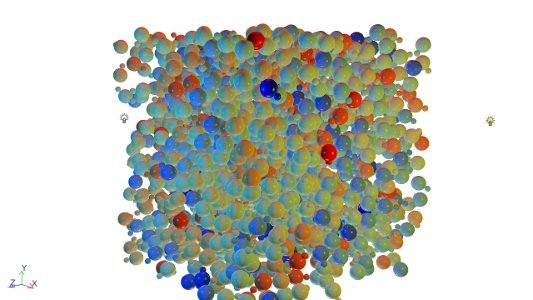
This is a simulation of a snowmen molecules. Snowmen molecules can be used as a tool to study crystal formation in binary systems (such as NaCl salts) or as a simple model of a liquid crystal. They also provide a initial test system for the implementation of composite particles for granular systems.
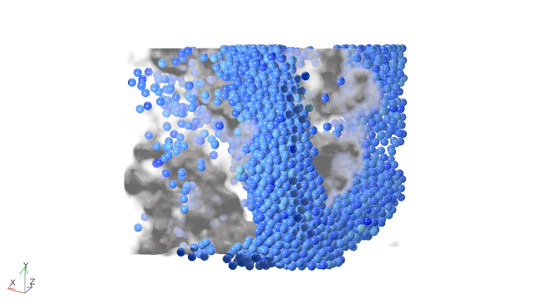
A simulation of flow through porous media. The boundary conditions are implemented using volumetric potentials and data from a microCT scan of a rock sample.

A simulation of a rolling drum which may be used as the starting point for the model of a kiln or a ball mill.

This is a live simulation of a granular hard-sphere system being sheared using Lees-Edwards boundary conditions. Although there are 16k particles in the main image, at the end of the video over 4 million particles are being rendered in realtime.
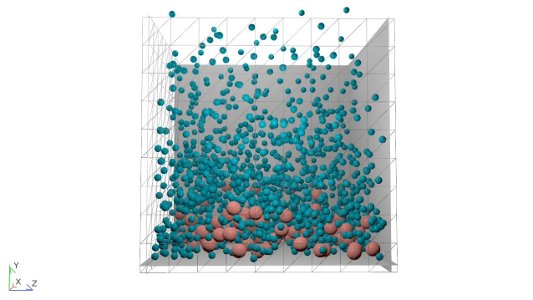
A small test simulation of a vibrated mixture of granulate. The wall at the bottom of the container has a "temperature" which is an approximation of a high frequency and low amplitude vibration.
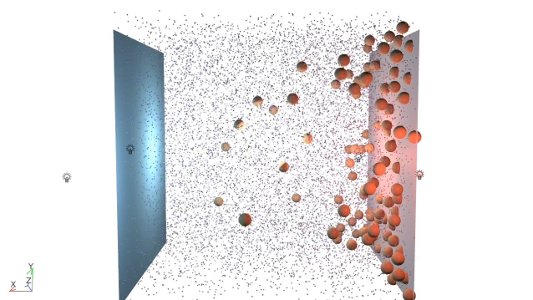
A simulation of thermophoresis (also known as the Soret effect or thermodiffusion) occurring in a nanofluid in between a hot and cold wall. Highlighted here is reverse thermophoresis, where the larger species migrates towards the hot plate.

A simulation of a pendulum used to test the constraint force implementation in gravity. The constraint force is used to anchor the top of the chain to the fixed particle (white), and is a key element of the more general rigid-body simulators.
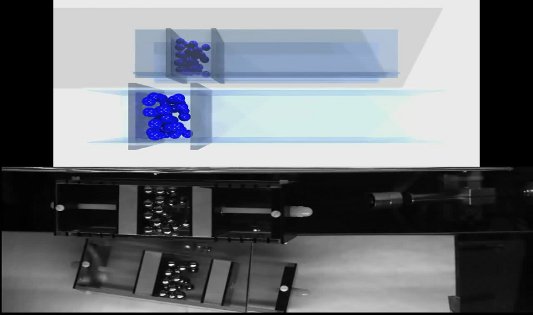
A simulation (top) of an experimental granular damper (bottom) after an initial perturbation. Granular dampers are novel devices used to dampen vibration in structures without requiring a fixed anchor or significant maintainance. The simulator predicts the decay of the amplitude to within 1% of the experimental results.
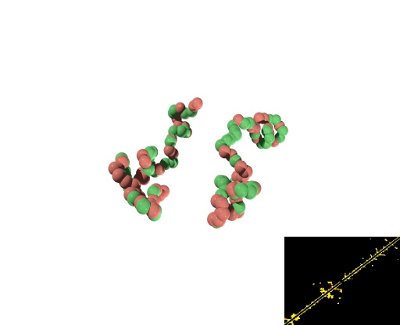
DynamO has many tools for simulating the folding of model proteins and this is just an example simulation of a pair of heteropolymers which agglomerate and begin to fold. The image in the lower right is the contact map used to track the folded structure of the pair.
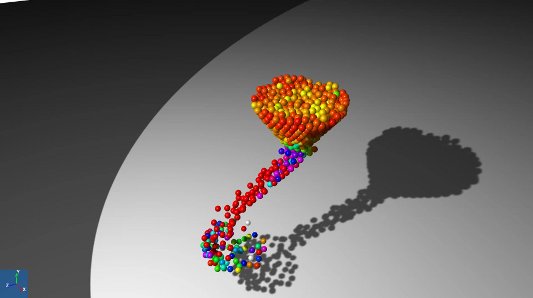
A simple test simulation of gravity and the boundary sphere meshes used to implement the hopper, chute and cup. The particles in the cup are sent to "sleep" (white) once they settle and may "wake up" on impact. The advantage of sending particles to sleep is that they incurr no computational cost.
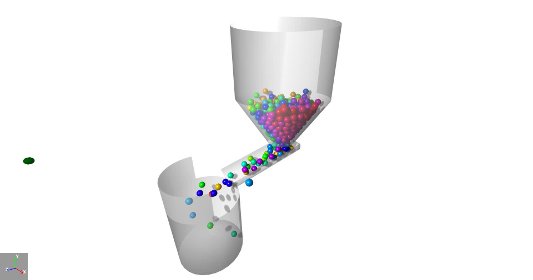
A test simulation of the triangle mesh boundaries, these can be used to capture arbitrarily complex (and sharp) boundaries.
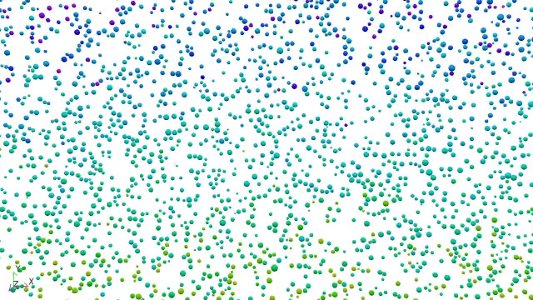
A simple simulation of sheared polydisperse hard disks used to demonstrate the use of DynamO in 2D systems.
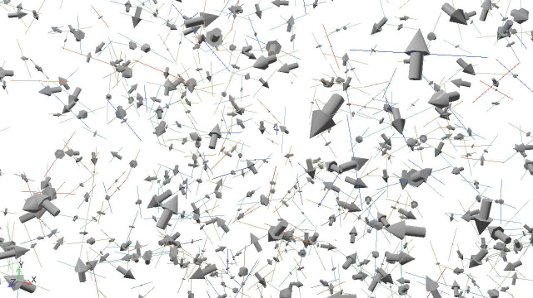
The complex dynamical system of infinitely-thin rods. These "molecules" caused a stir when they were first proposed, as they are an ideal gas which exhibits non-ideal transport properties. They are therefore an excellent model to test some of the dynamical approximations of kinetic theory.
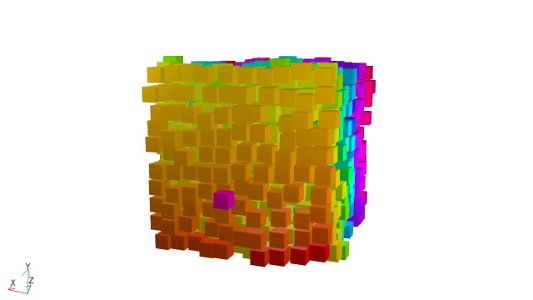
Parallel hard cubes are another simple model-molecular system with interesting thermodynamic behaviour. The freezing transition in fluids is still poorly understood and this system is an "ideal" model to explore it in, as it readily and obviously freezes but appears to undergo a second order transition.
DynamO has the following features:
DynamO contains all the latest EDMD algorithms for dissipative systems:
Dynamo has extremely advanced algorithms for accelerated dynamics:
Page last modified: Thursday 29th July 2021